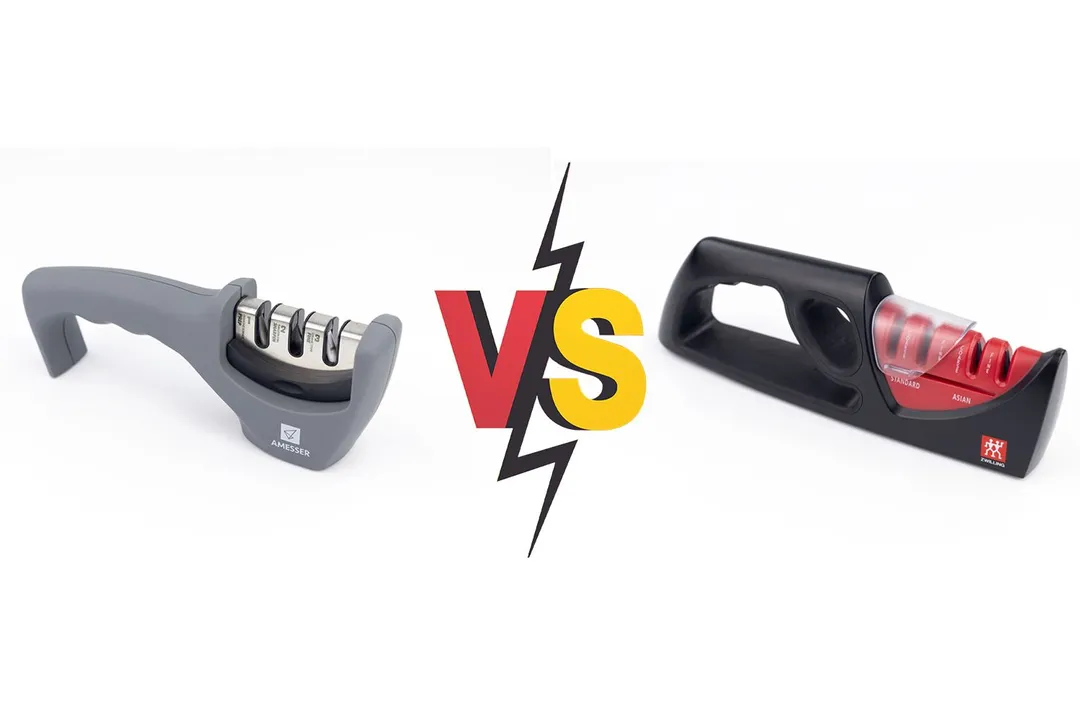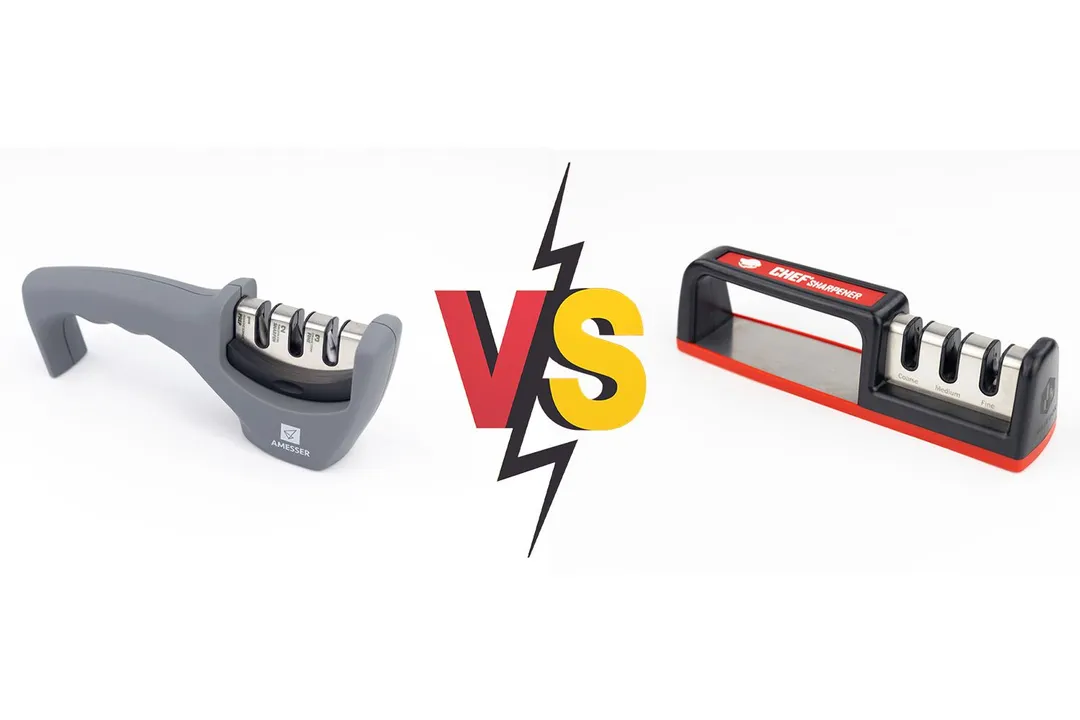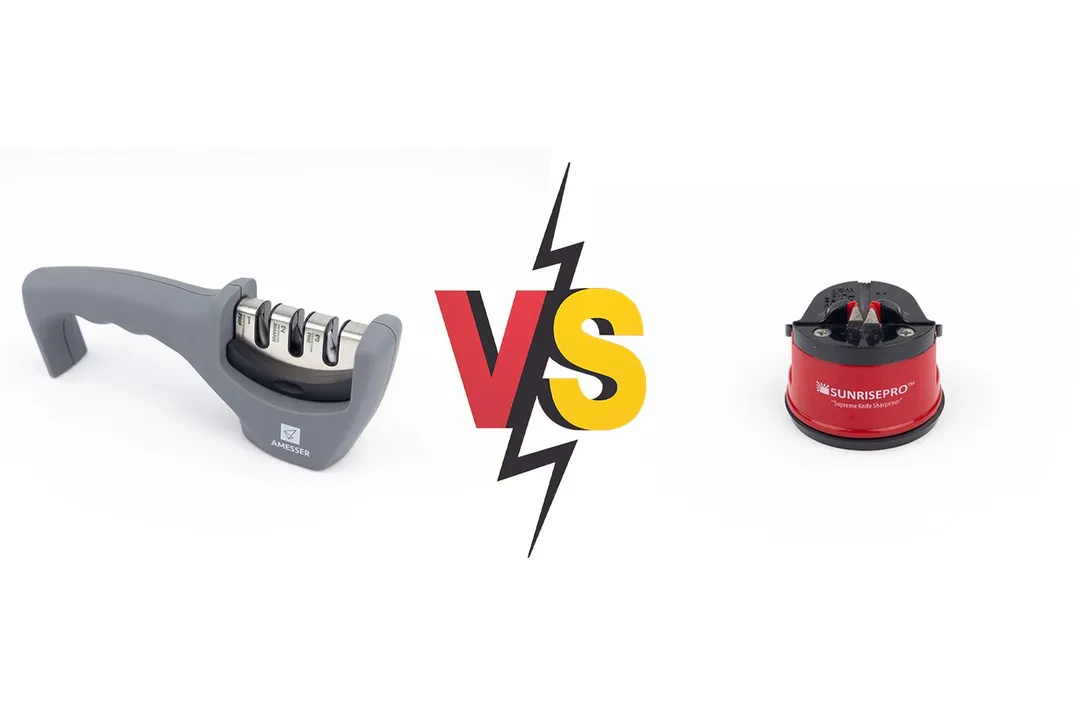Our recommendations are made independently through Research & Testing. We may receive commissions from purchases made via our links.
Amesser A-65 vs. Sharpal 191H Manual Sharpener Side-by-Side Comparison
The Amesser A-65 may not be as quick as the Sharpal 191H sharpener but it’s much easier to work with. Check our detailed comparison.
Amesser A-65
Tested Using Methodology v1.1Sharpal 191H
Tested Using Methodology v1.1
Overall Verdict
While they couldn’t look more different from each other, the Amesser A-65 and the Sharpal 191H performed to quite similar levels.
Despite having one less sharpening slot, the Sharpal proved to be faster and more effective in our tests and slightly outdid the Amesser in material retention too. However, the margins in all those three categories were modest. The two also ended up with close scores on edge smoothness.
When it comes to design and ease of use, the Amesser definitely has the upper hand. Its conventional full body makes it easy to grab and work with, whereas the Sharpal’s cylindrical shape and unstable suction base makes sharpening challenging if not dangerous. For that reason, the Amesser ended up with a higher overall rating.
Pros & Cons
- Affordable
- Instinctive and easy to use
- Well-built with a solid design
- Grippy and comfortable handle
- Safety glove included
- Small footprint
- Affordable price
- One-handed sharpening (when the base works)
- Tapered base
- High center of gravity
- Suction cup only works on particular surfaces
- Ceramic blades don’t seem to work
Key Specs
Where to Buy
*You help support HealthyKitchen101's product testing and reviews by purchasing from our retail partners.
Analysis and Test Results
Performance
Sharpening Time to Cut a Lemon
Material Retention



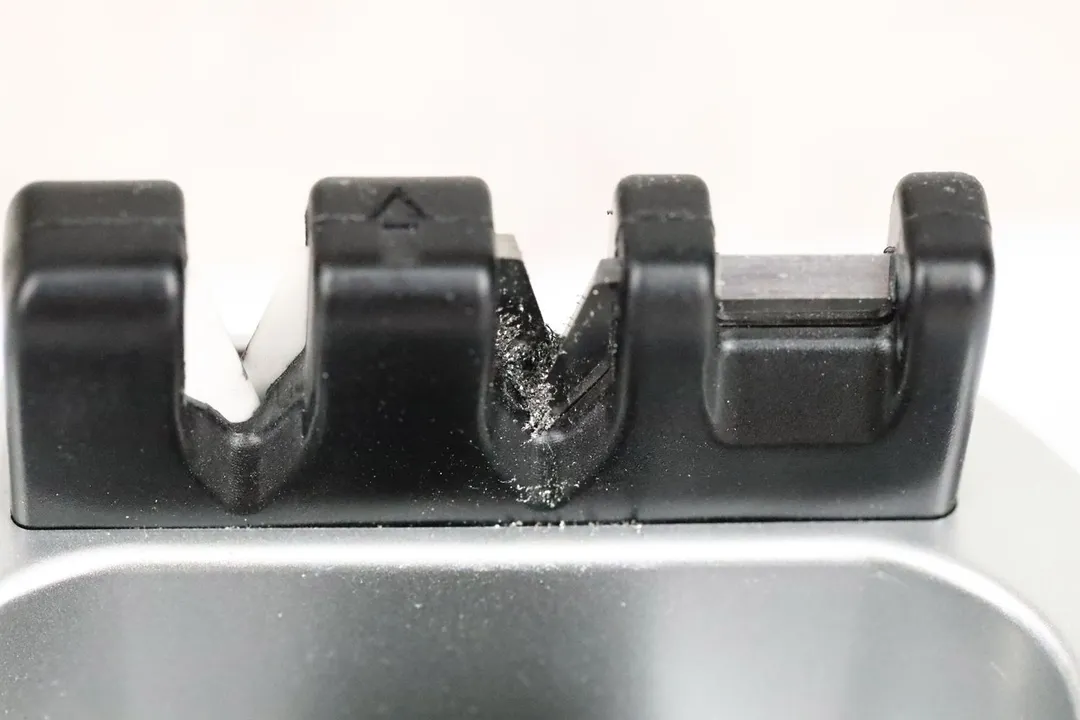
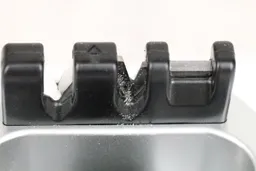
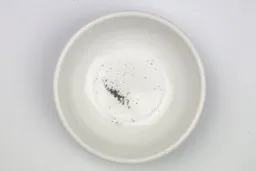
Maximum Sharpness Achieved
Edge Smoothness


Design
In the Box

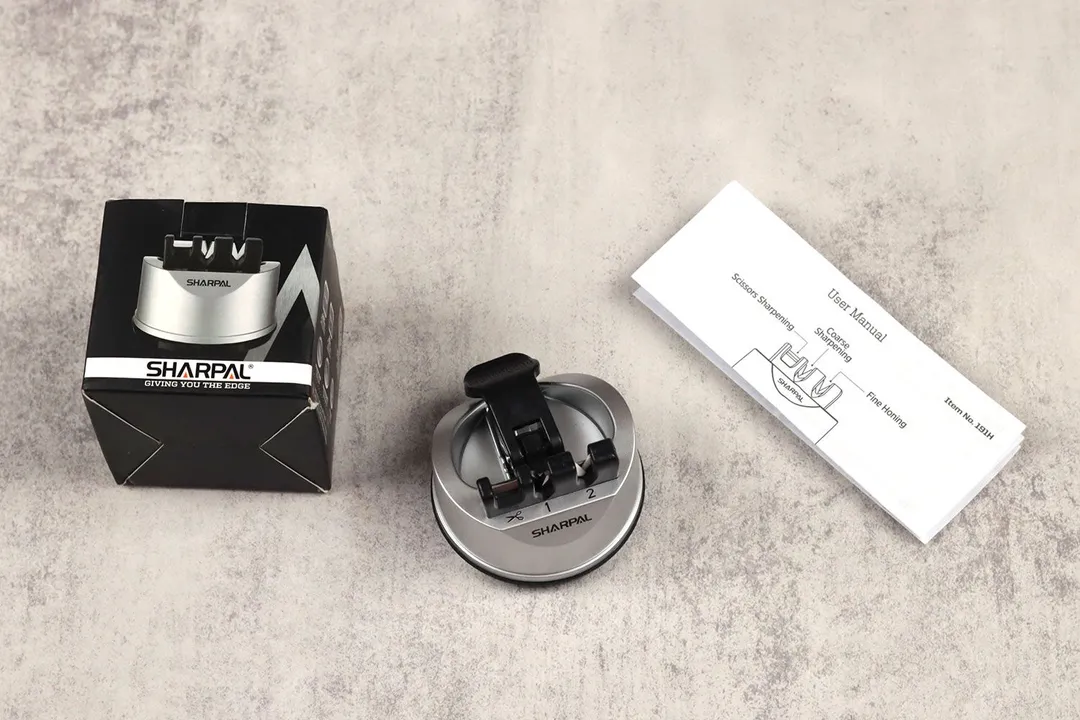
Dimensions
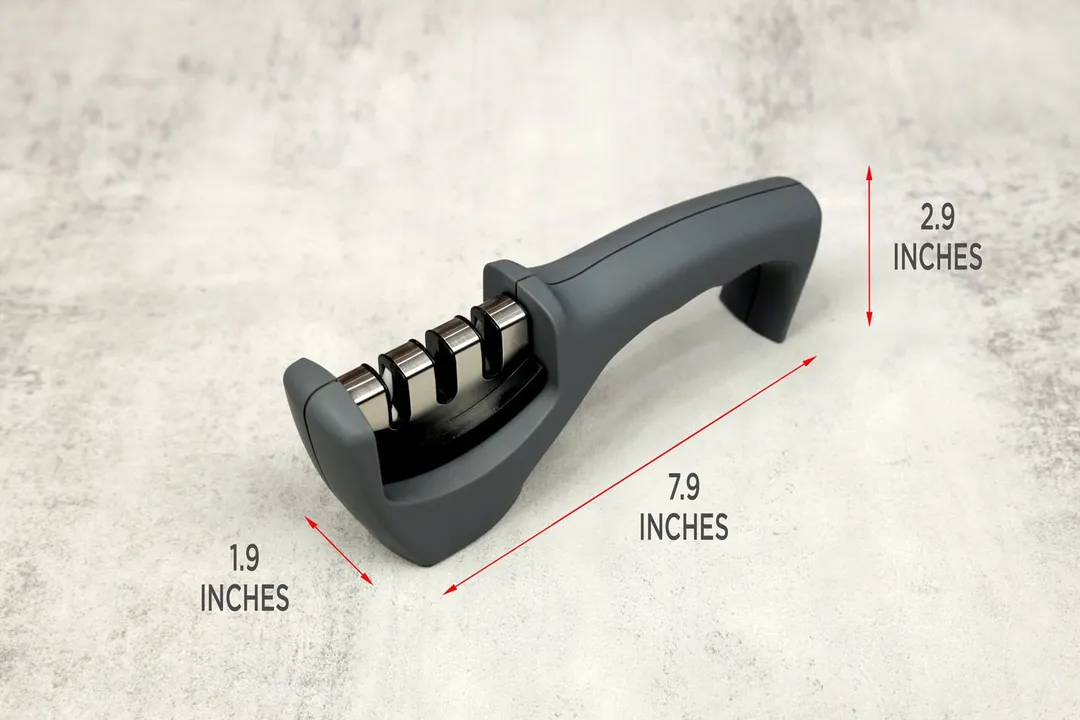
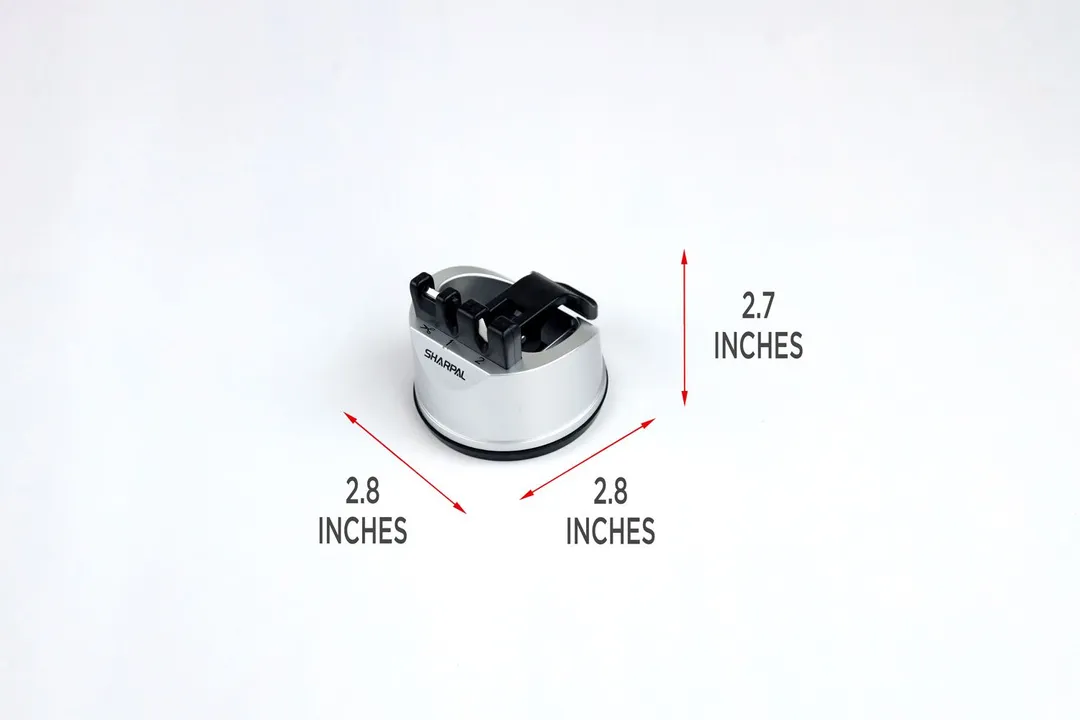
Build Quality
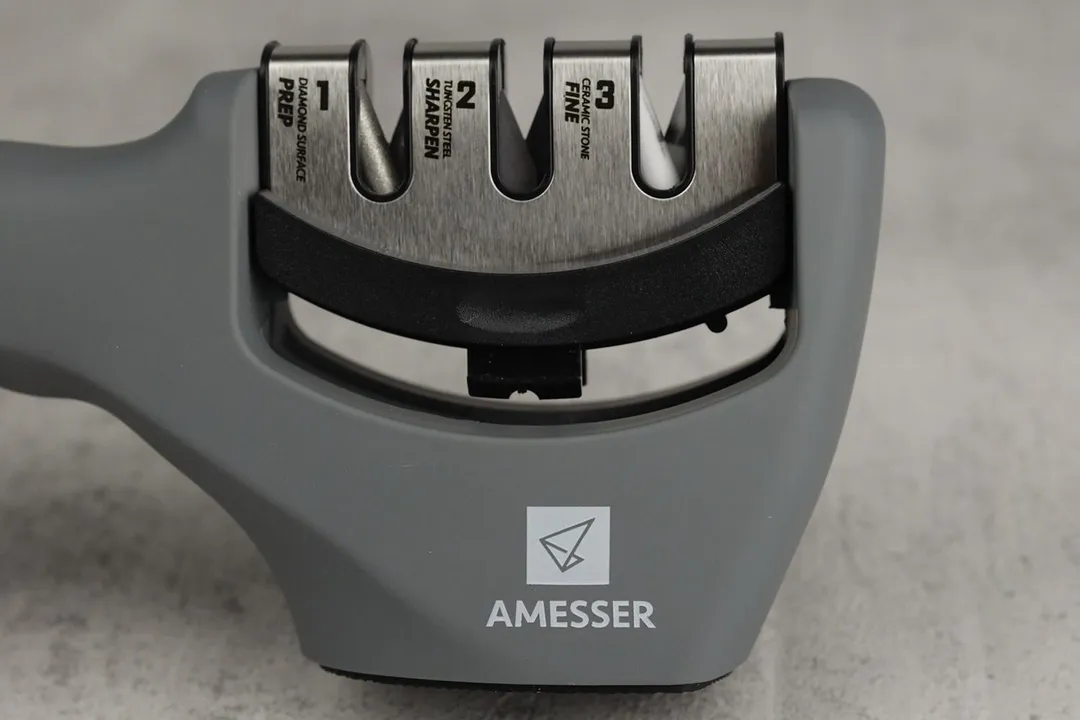
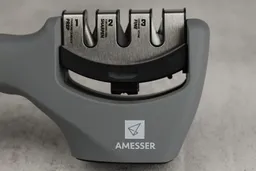
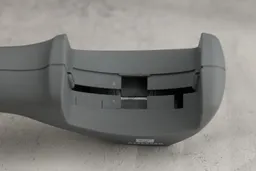
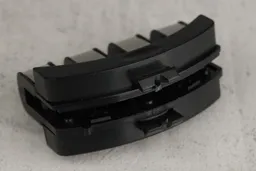
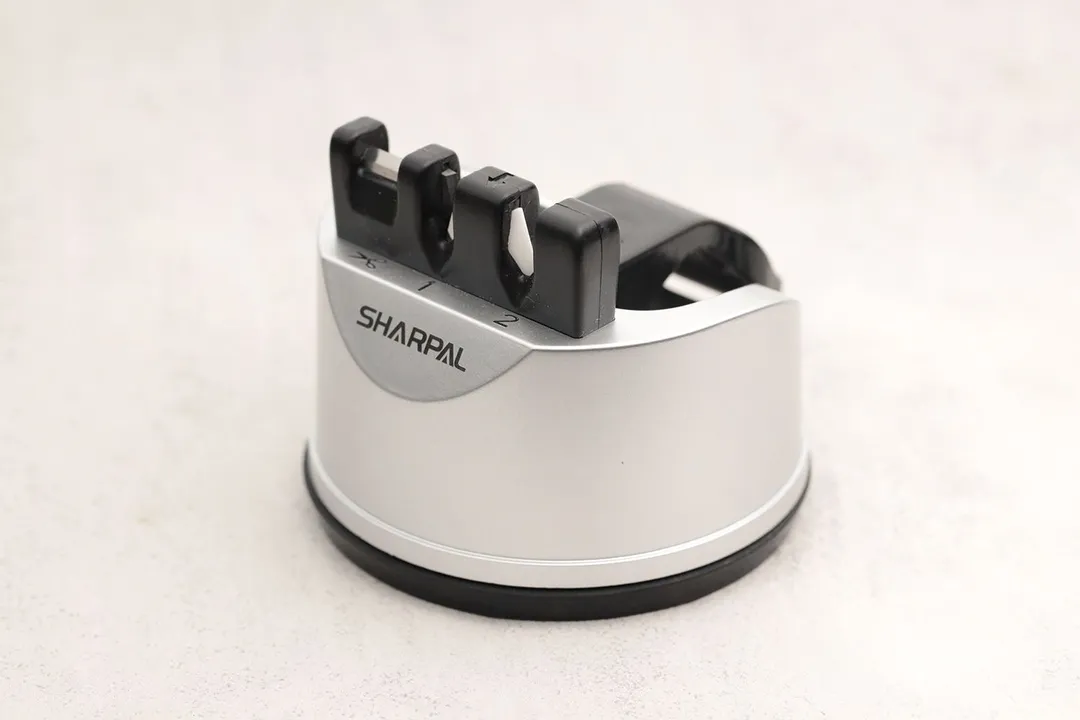
Working Section
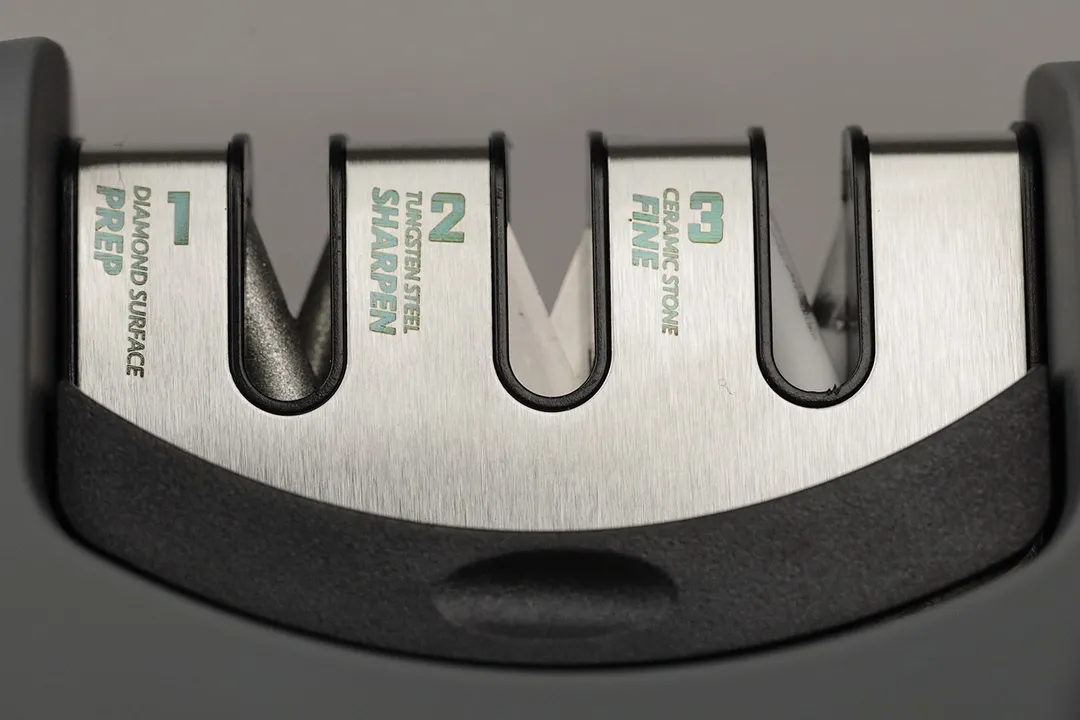
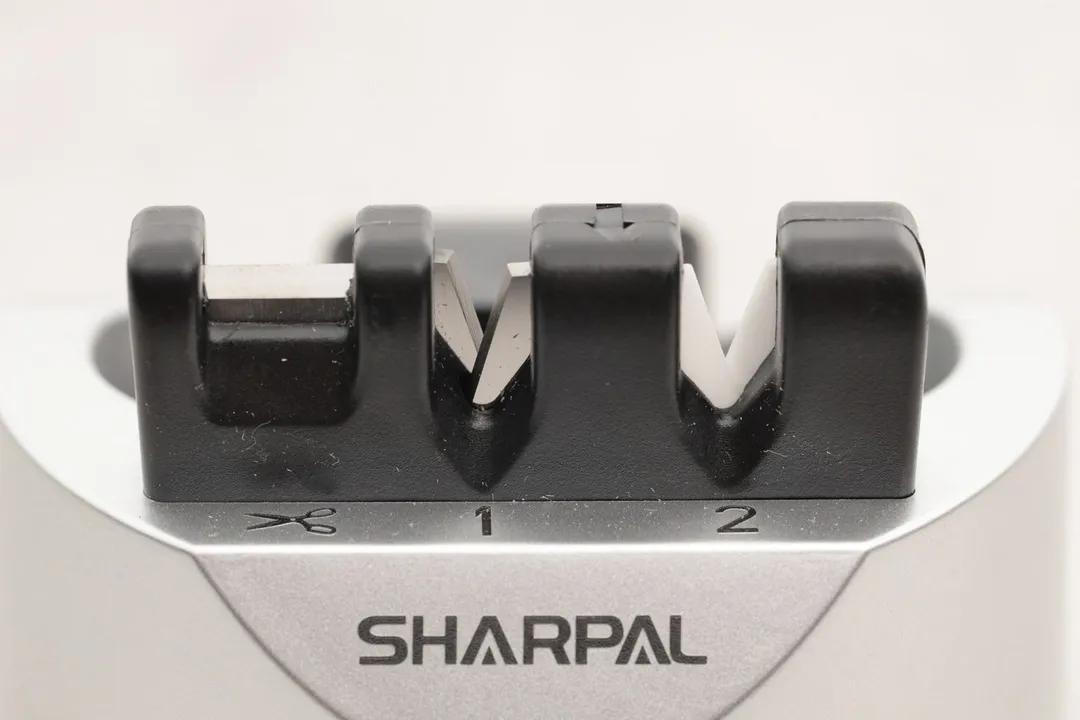
Base
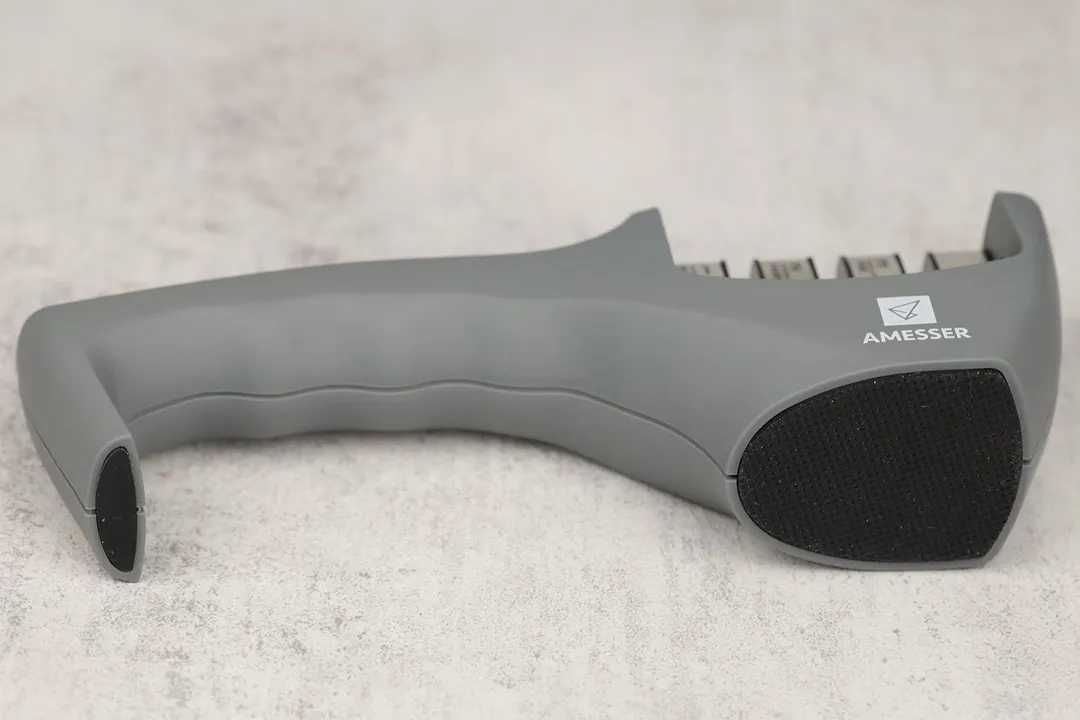
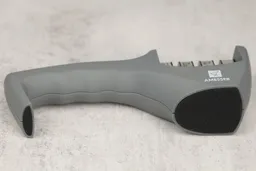
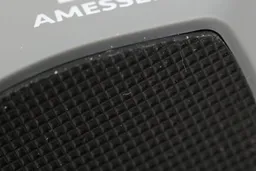
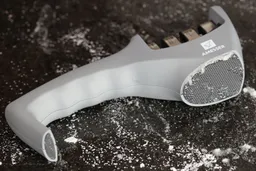
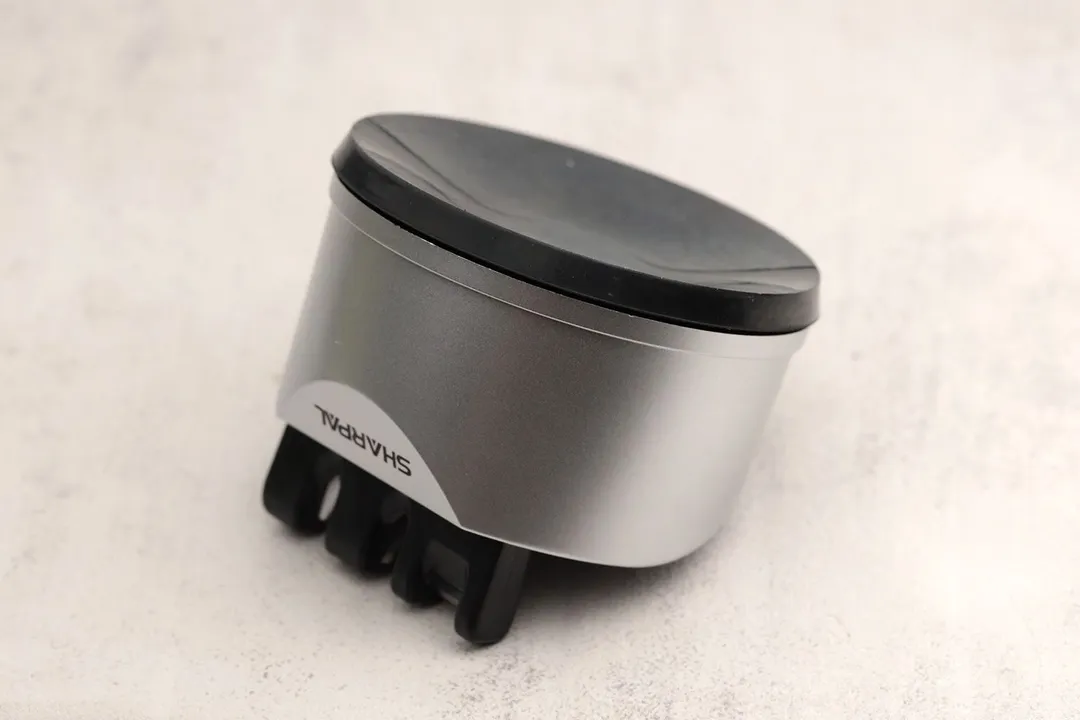
Grip

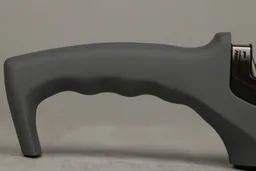

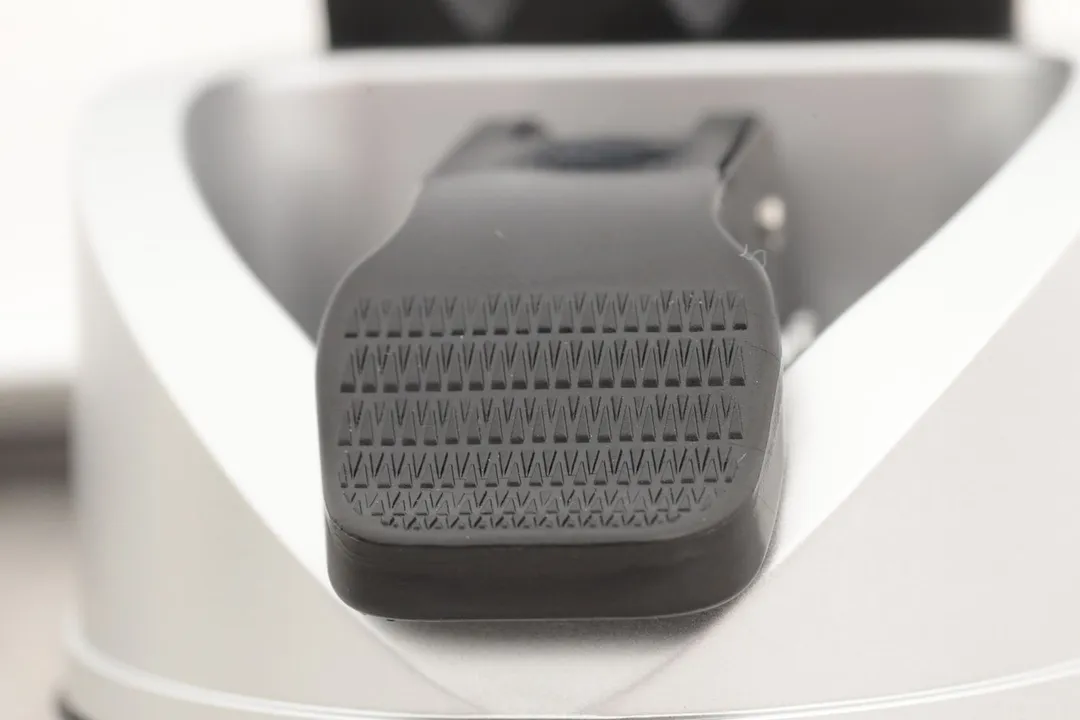
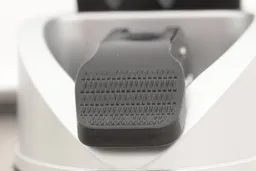
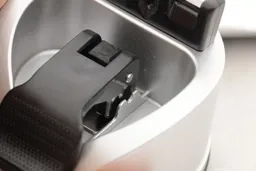
Usability
Slot Arrangement
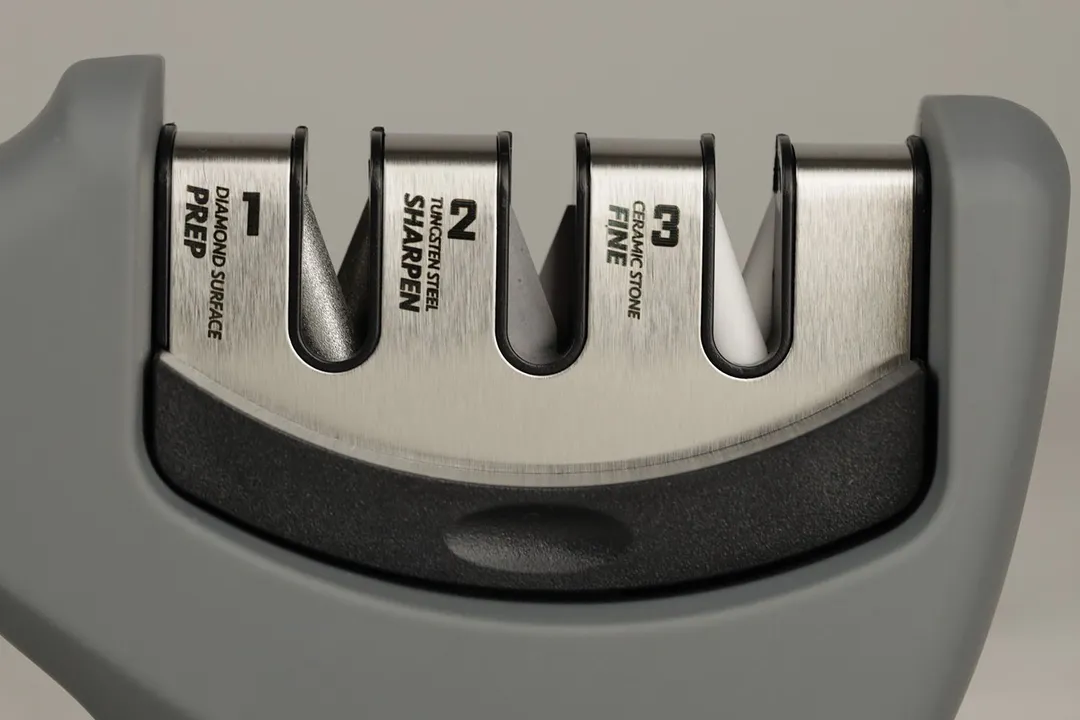
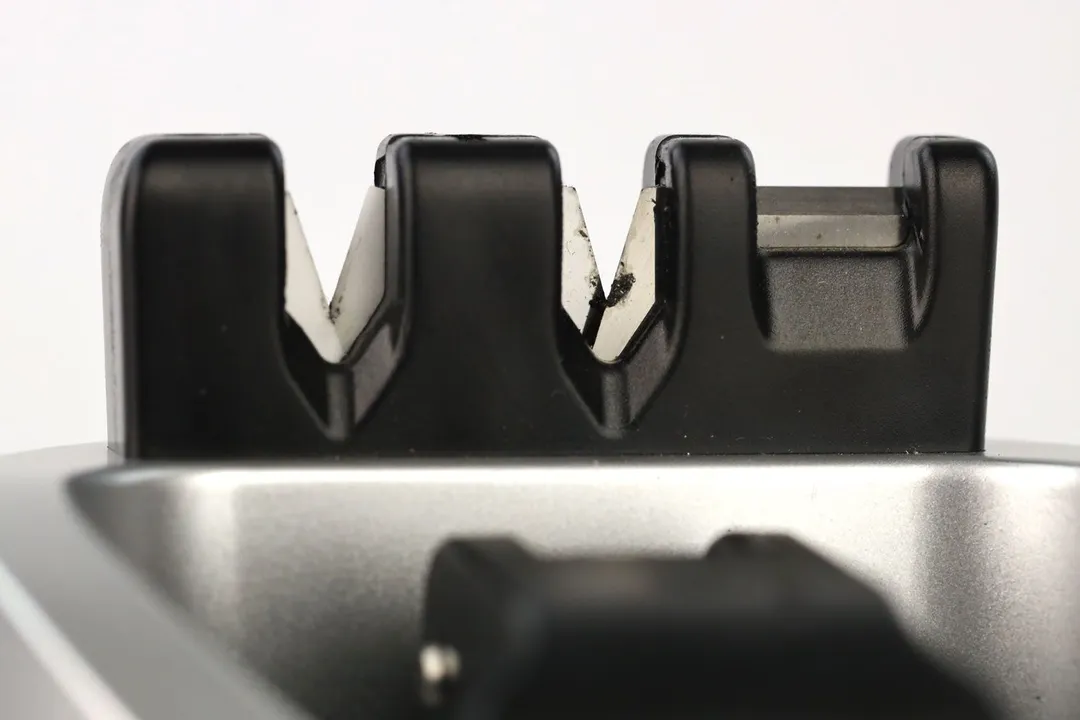
Insertion
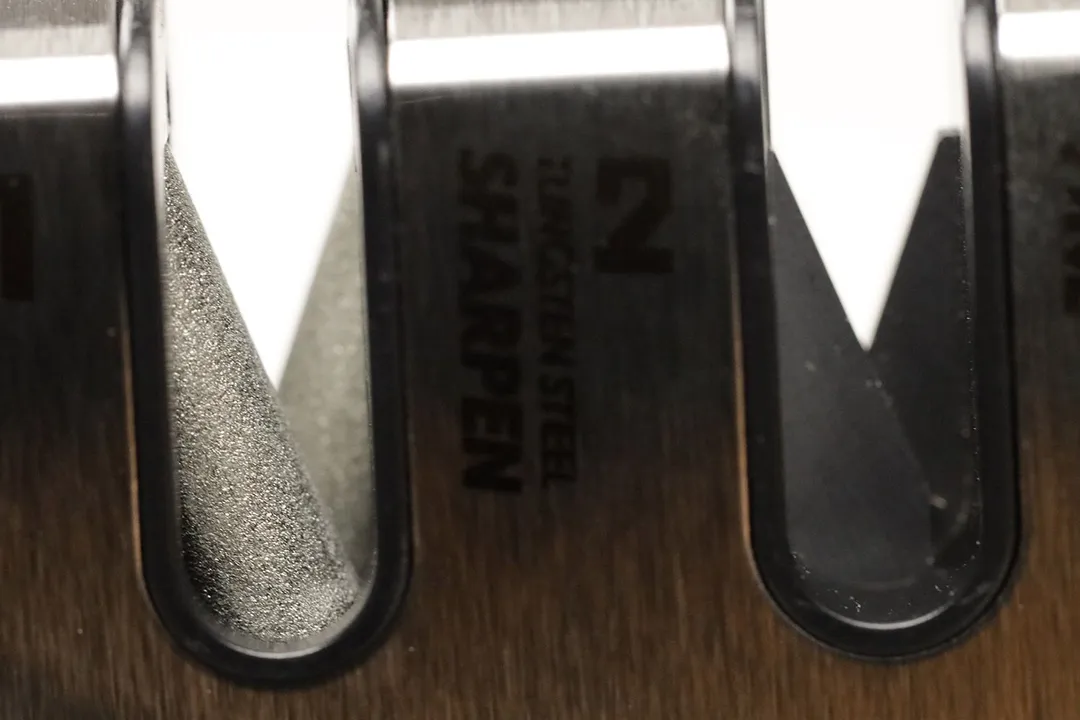
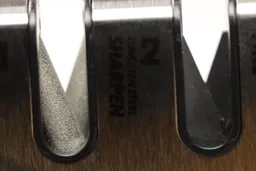
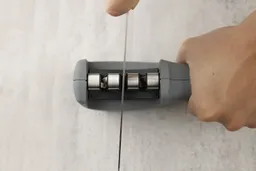
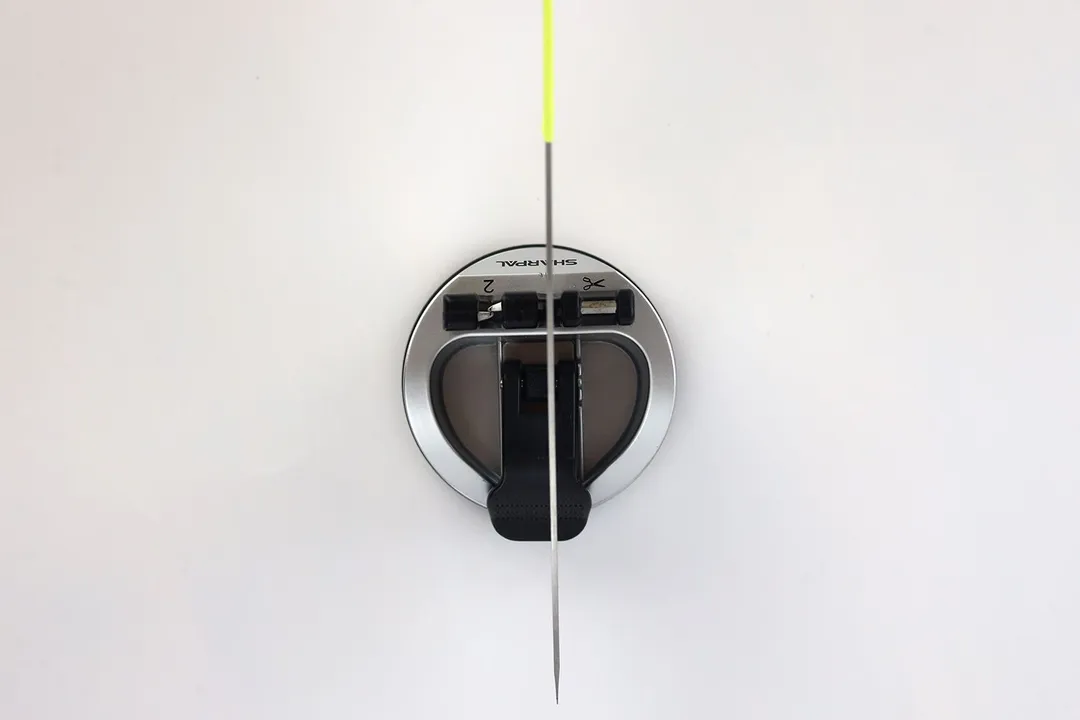
Pulling Through
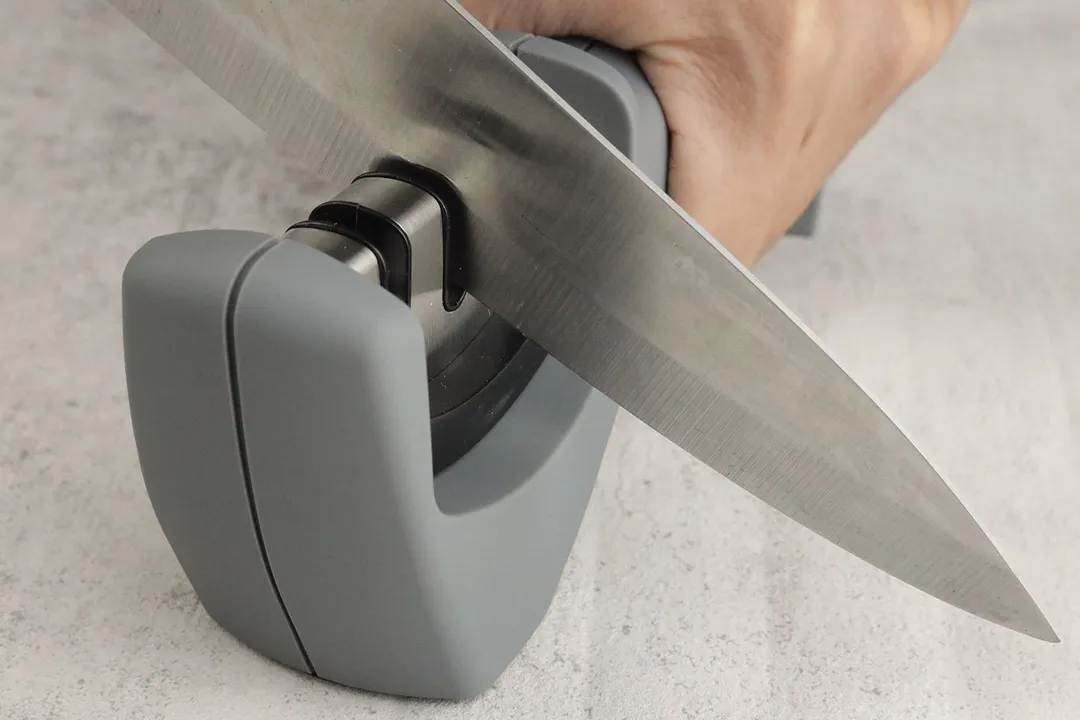
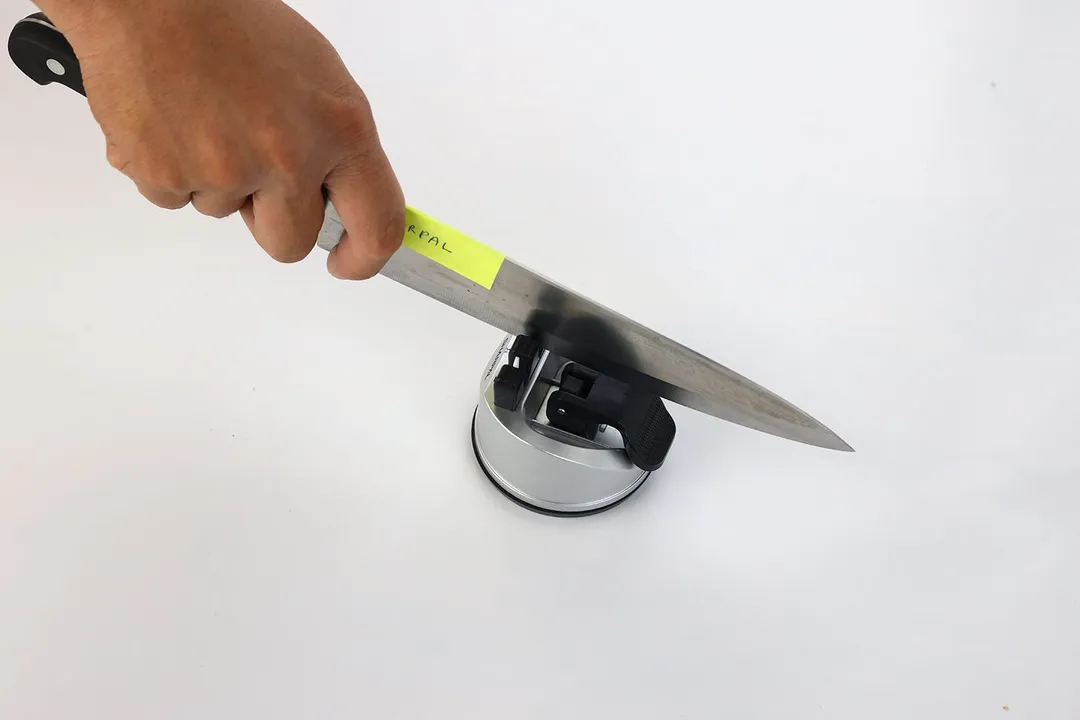
Stability on a Clean Surface
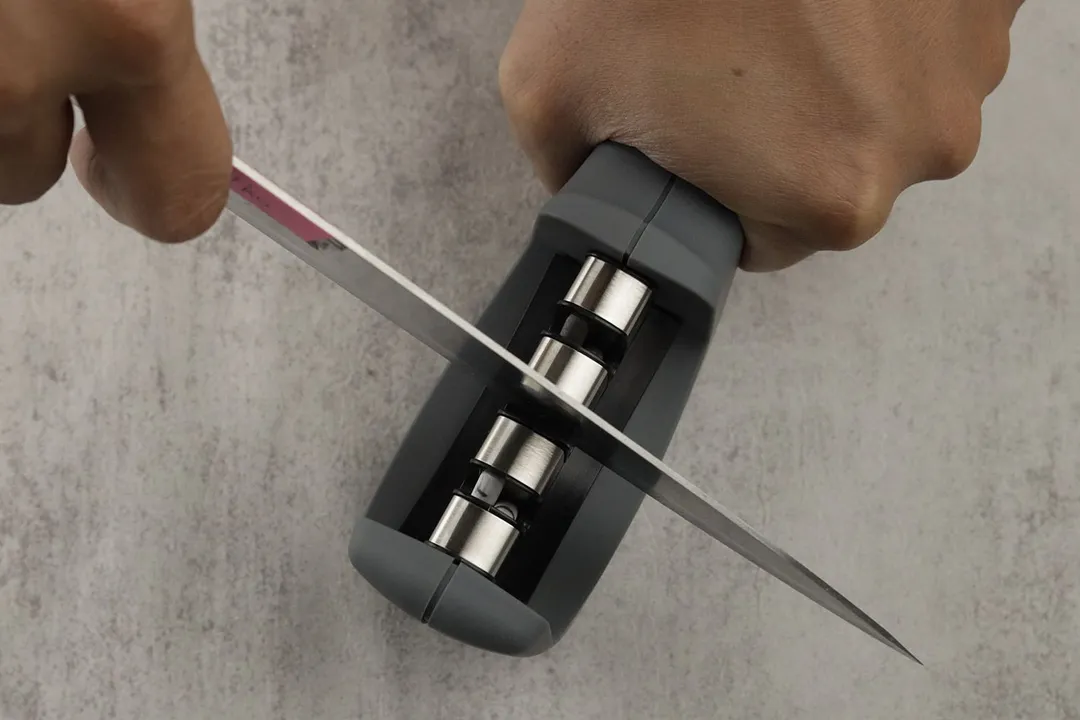
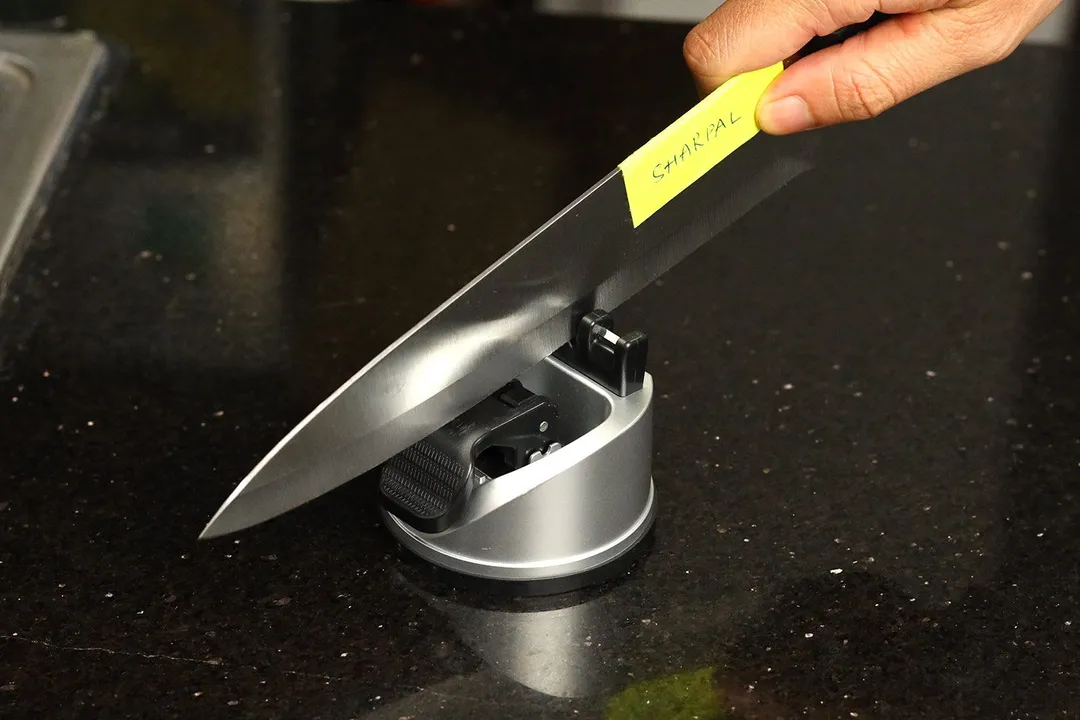
Stability on a Wet and Dirty Surface

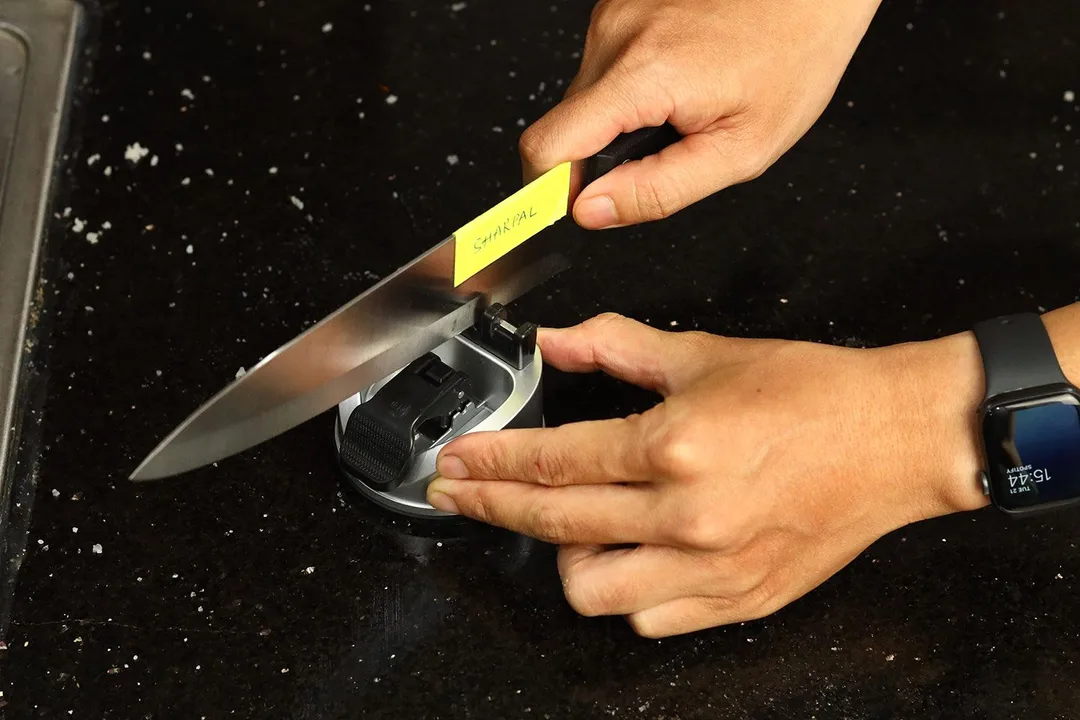
Behind the Comparison
Anh Ngo is a writer with 9 years experience at different media outlets, covering from public news and events to product testing and analysis. At HealthyKitchen101, she works across different departments, communicating closely with its network of writers, editors, and health, tech, and search engine experts to provide a meaningful and pleasant reading experience for visitors.
Lap is Head of the Research, Testing, and Review Team (RTR Team) at HealthyKitchen101.com, where he directs and supervises the testing of kitchen gadgets and appliances.
Nguyen Ntk is a graphic designer, photographer, and videographer whose philosophy centers around respecting and celebrating the beauty of reality. Through his lenses, Nguyen strives to capture the true essence of objects and events, showcasing and highlighting authentic features without distortion or exaggeration.




